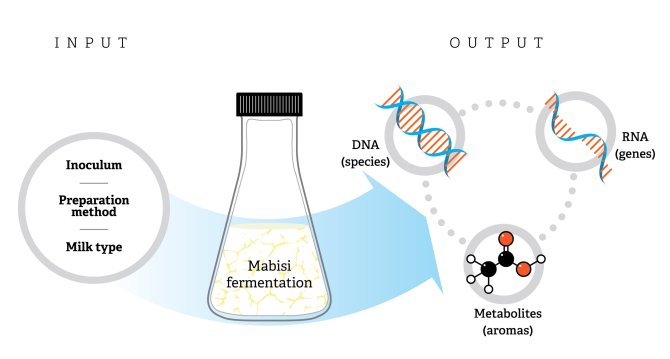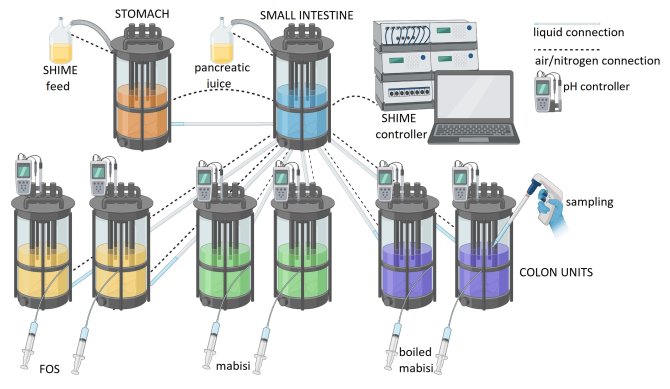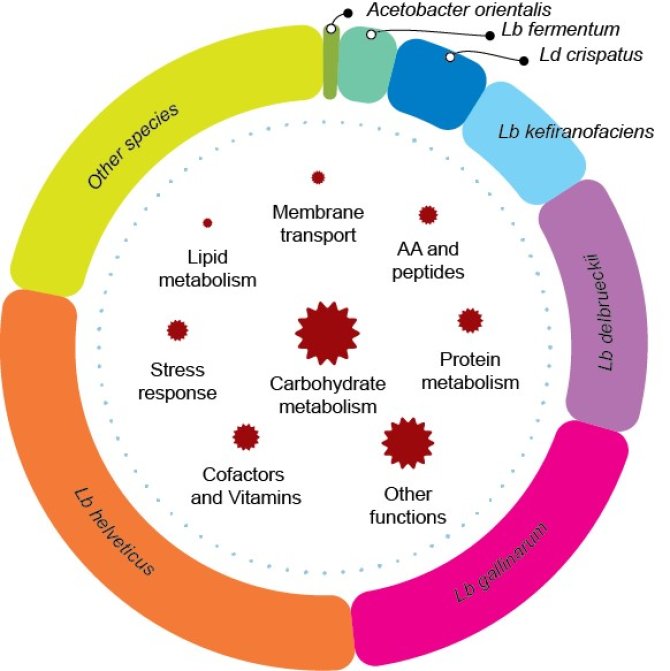
Project
Community functionality linked to species diversity
We study Zambian fermented product, mabisi, as a model system to explore mechanisms driving community stability and functionality.
Background
There is a tremendous variation among natural ecosystems in the diversity of species and their interactions, which are thought to define ecosystem stability and functionality. Ecological theory predicts that the stability of an ecosystem relies on balanced interspecies interactions and how these species interact with the environment.
Project description
In contrast to most other natural ecosystems, mabisi (traditional fermented milk product from Zambia) harbours a relatively simple microbial community of six to eight most abundant species of bacteria and yeasts. Such a low taxonomic diversity allows us to experimentally test whether species composition, type of interspecies interactions, environmental conditions, and degree of long-term co-existence define stability of the community (Figure 1). We intend to link the functionality of individual species to ecosystem stability and build a model of the microbial community interactions. Our work will also allow us to design stable starter cultures for safe and sustainable production of Mabisi and other traditional fermented milk products.

Results
We characterised mabisi community using meta-omic data and determined the key species (Figure 2). Mabisi community is maintained by lactic acid bacteria, acetic acid bacteria, yeasts and viruses, most of which are bacteriophages. In our experiments we discovered that long-term propagation of mabisi in the laboratory can shift microbial community composition in several directions while we observe functional convergence in those communities. We are currently looking further into specific roles of key microbes in mabisi community in the overall ecosystem stability and functionality. We are incorporating our findings into a mathematical model of mabisi. This model would help us to investigate the role of environment (milk type) in the stability of mabisi community over a series of propagations.
In collaboration with Food Microbiology group, WUR we also tested mabisi microbiota as a factor influencing gut microbial community in a Simulator of Human Intestinal Microbial Ecosystem (SHIME®) model system (Figure 3). We found that even short-term exposure of mabisi to human gut microbiota shifts microbial community of the gut towards healthier composition and diversity. This shift is similar to the one caused by a common prebiotic (fructooligosascharides).

Publications
- de Jong M, Alekseeva AY, Miraji KF, Phiri S, Linnemann AR, Schoustra SE. Environmental Selection Shapes Bacterial Community Composition in Traditionally Fermented Maize-Based Foods from Benin, Tanzania and Zambia. Microorganisms. 2022 Jul 5;10(7):1354. doi: 10.3390/microorganisms10071354.
- Alekseeva AY, Groenenboom AE, Smid EJ, Schoustra SE. Eco-Evolutionary Dynamics in Microbial Communities from Spontaneous Fermented Foods. Int J Environ Res Public Health. 2021 Sep 26;18(19):10093. doi: 10.3390/ijerph181910093.
- Alekseeva AY, Kameneva LV, Kostyuk SV, Veiko NN. Multiple Ways of cfDNA Reception and Following ROS Production in Endothelial Cells. Adv Exp Med Biol. 2016;924:127-131. doi: 10.1007/978-3-319-42044-8_25.
- Kostyuk SV, Konkova MS, Ershova ES, Alekseeva AJ, Smirnova TD, Stukalov SV, Kozhina EA, Shilova NV, Zolotukhina TV, Markova ZG, Izhevskaya VL, Baranova A, Veiko NN. An exposure to the oxidized DNA enhances both instability of genome and survival in cancer cells. PLoS One. 2013 Oct 17;8(10):e77469. doi: 10.1371/journal.pone.0077469.
- Kostyuk SV, Ermakov AV, Alekseeva AY, Smirnova TD, Glebova KV, Efremova LV, Baranova A, Veiko NN. Role of extracellular DNA oxidative modification in radiation induced bystander effects in human endotheliocytes. Mutat Res. 2012 Jan 3;729(1-2):52-60. doi: 10.1016/j.mrfmmm.2011.09.005.
